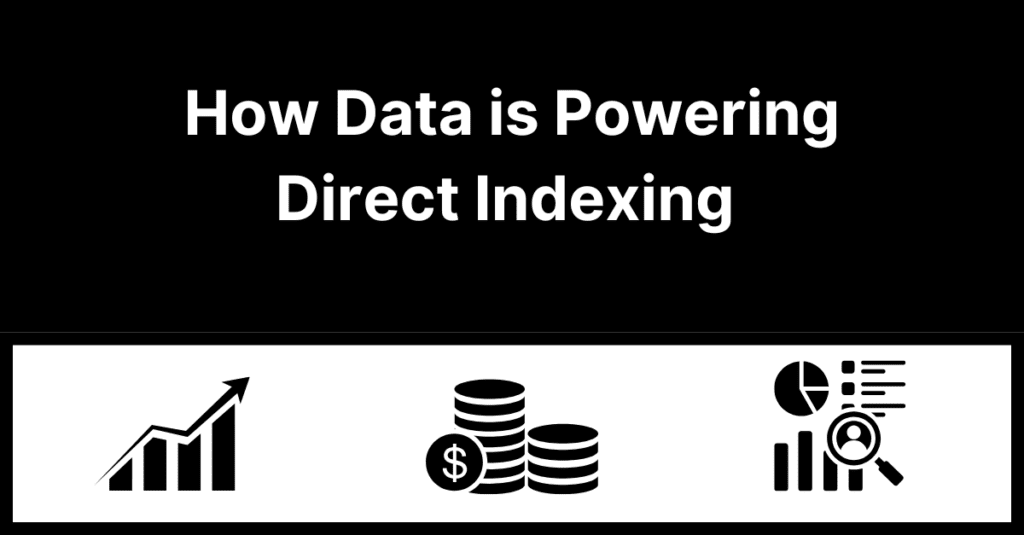Direct indexing is one of the hottest trends for investors of all levels. The market for direct indexing is growing so quickly that it’s expected to outpace exchange-traded funds (ETFs) and mutual funds over the next five years. This investment strategy has historically only been available for firms that work with high-net-worth individuals. But, BridgeFT’s WealthTech API is helping to make this popular strategy more widely available. Let’s examine how data is powering the direct indexing revolution.
Creating Personalized Investing Experiences
As technology continues to get more advanced, consumers don’t just desire personalized experiences – they expect them. For example, consumers expect:
- Airlines to text them if their flight is delayed or changed.
- Social media platforms to customize their feeds based on their interests.
- Search engines and AI tools to answer their every question in seconds.
Personalization is growing increasingly important in wealth management as both firms and investors expect customized investing experiences. Instead of one-size-fits-all portfolios, firms and investors crave portfolios that are tailored to their financial goals and personal preferences.
Traditionally, personalized investing was something only available to ultra-high-net-worth individuals with millions of dollars in capital. However, several key breakthroughs have made personalized investing more commonplace:
- Zero-commission trading: This fairly recent offering makes it easier for investors to buy/sell securities as they please, regardless of how much capital they have.
- Fractional share investing: This makes it easier for advisors to build customized portfolios for clients, even when they have less capital.
- Access to timely multi-custodial data: Streamlined access to timely multi-custodial data is now making it easier to provide personalized investing to clients of all sizes. What used to require a heavy lift to create back-end infrastructure can now be achieved via a single wealthtech platform: BridgeFT’s WealthTech API.
These financial breakthroughs have made it easier for advisors to offer personalized investing to all of their clients, which is fueling the direct indexing revolution.

What is Direct Indexing?
Direct indexing – also known as personalized or custom indexing – is a strategy that investors use to mirror the return of a stock index, such as the S&P 500 or NASDAQ. This market is projected to reach more than $800 billion in assets by 2026, growing faster than ETFs and mutual funds.
Typically, most investors will simply buy shares in a mutual fund or exchange-traded fund (ETF) if they want to mirror the return of an index. But, direct indexing offers a more strategic way to achieve this result.
Direct indexing is when an investor buys all of the individual stocks that make up an index in order to mirror the return of that index. For example, if an investor wanted to mirror the return of the S&P 500 then they could simply buy a representative amount of all the stocks within this index. From there, they would rebalance the positions as the stocks’ values fluctuated over time.
At first glance, custom indexing might seem like the same basic concept as buying an index fund – but doing significantly more work to achieve the same goal. However, there are several key benefits of direct indexing for investors:
- Personalization: Advisors can directly change the weight of their positions to suit their clients’ investment goals. For example, an advisor could create a direct index that mirrors the S&P 500 but with a slightly stronger allocation towards tech, artificial intelligence, EVs, or other potential growth industries.
- Tax benefits: Advisors have more flexibility to tax-loss harvest positions, which is not typically offered by ETFs or mutual funds.
Let’s take a closer look at why it’s beneficial for wealth management firms to offer direct indexing to their clients.
Offering Custom Indexing to Your Clients
Offering direct indexing is a good option for financial advisors who are interested in offering enhanced service to their clients. This investment strategy allows for:
- Personalized portfolios: Direct Indexing allows advisors to tailor investors’ portfolios depending on their preferences. They can weight the portfolio to track specific goals, place an emphasis on companies that adhere to ESG initiatives, or include/exclude specific companies based on their client’s preferences.
- Tax benefits: Since they directly own all of the stocks, advisors can tax-loss harvest at the security level. This means that losses can be captured even in a year where the overall index increases in value. These tax benefits are especially important for clients in higher tax brackets.
- Increased performance: Advisors can weigh portfolios to track higher-growth industries while still enjoying the diversification benefits of index investing. This allows the investor to be more aggressive (if they choose) and creates the potential for outsized performance.
Historically, personalized investing was something only available to wealth management firms with access to ultra-high-net-worth individuals. However, BridgeFT’s WealthTech API platform now offers streamlined access to multi-custodial client and account data to more accurately capture a client’s current investments, and allow for more actionable analysis and recommendations. This makes it easier for advisors to offer custom indexing to clients of all sizes.
What Type of Data is required?
Building investing platforms that allow a high degree of customization relies heavily on custodial data. Simply put, firms need access to data from all major custodians that provide critical client account and investment data. Getting access to all major custodians is often a time-consuming and expensive challenge that can prohibit firms from offering direct indexing. Thus, the challenge many firms face is how to build and establish the right data feeds to fuel their direct indexing platforms.
Without a strong infrastructure, new solutions remain stagnant, costly, and time-consuming. For example, rebalancing a portfolio so that it continues to correspond to an index has historically been very difficult and time-consuming for investors and their advisors. But, with BridgeFT’s WealthTech API, financial advisors eliminate the need for manually uploading or inputting client holdings, significantly enhancing the user experience while also saving the advisor’s time.
This capability ensures advisors have current and accurate insights into their clients’ portfolios, facilitating informed decision-making and a streamlined operational process.
BridgeFT’s Solution for Indexing Firms
BridgeFT’s WealthTech-as-a-Service platform is a purpose-built WealthTech infrastructure solution that enables firms to build wealth apps without needing to build a data infrastructure. BridgeFT’s platform is valuable for indexing firms for three reasons:
- It empowers direct/custom indexing solutions by harnessing client account data for in-depth portfolio analysis and tailored recommendations.
- It eliminates the need for manual uploading or inputting of client holdings which saves the advisor hours of monotonous manual labor.
- It automatically updates account information without manual effort, once the information has been initially shared.
WealthTech API in Action: ALLINDEX Case Study
BridgeFT recently helped the global fintech startup, ALLINDEX, accelerate its expansion within the United States by giving it access to multi-custodial data via a single API.
ALLINDEX is a high-growth fintech startup that specializes in custom indexing and thematic portfolio construction to help create personalized financial exposures. This startup is pioneering the democratization of direct indexing and has already experienced success in the European and APAC markets. However, to succeed in the U.S., it needed a strategic data partner. Enter, BridgeFT.
In previous markets, ALLINDEX had to work directly with custodians to build individual connections. This presented a massive challenge for the company and prevented it from scaling too quickly. But, in the U.S., ALLINDEX leveraged BridgeFT’s WealthTech API to instantly get access to data from all of the major custodians and back office providers. This allows their users to automatically bring in essential account and investment data in order to create portfolios from scratch.
ALLINDEX’s partnership with BridgeFT allowed the startup to:
- Accelerate its U.S. expansion by months, if not years.
- Create a differentiated client experience, helping to improve client acquisition and onboarding.
- Scale quickly, capturing market share at a faster-than-expected rate.
Key Quote from ALLINDEX CEO Christian Kronseder: “In prior roles, I had to work directly with custodians to build individual connections. Setting up connectivity to multiple providers with legacy infrastructure is a very big undertaking and the work BridgeFT has done as our aggregator reduced our time to market by months, if not years. We didn’t have the resources or time, hence we are happy to go to BridgeFT, a versatile solution provider.”
Hopefully, you’ve found this article valuable in learning about how data is powering the direct indexing revolution. Interested in learning how BridgeFT’s WealthTech platform can help you offer a cutting-edge direct indexing experience to your clients? Contact the BridgeFT team to learn more.

